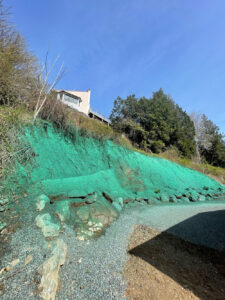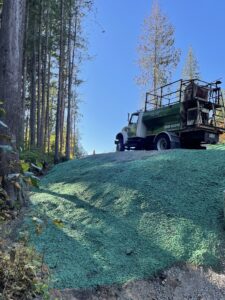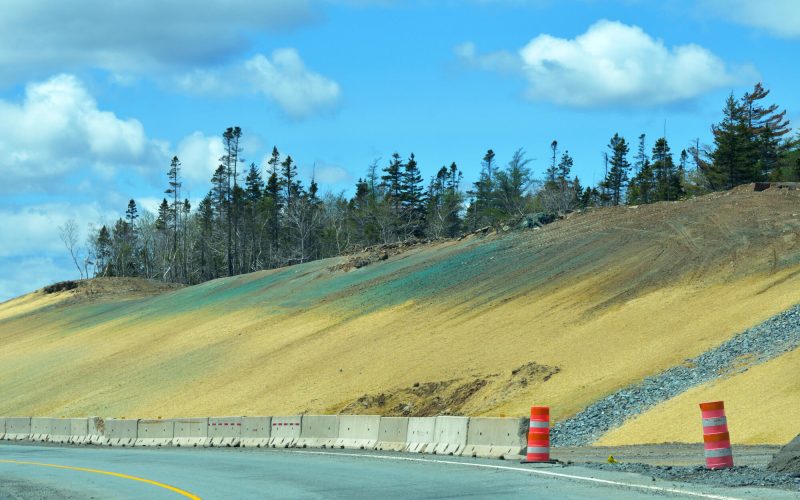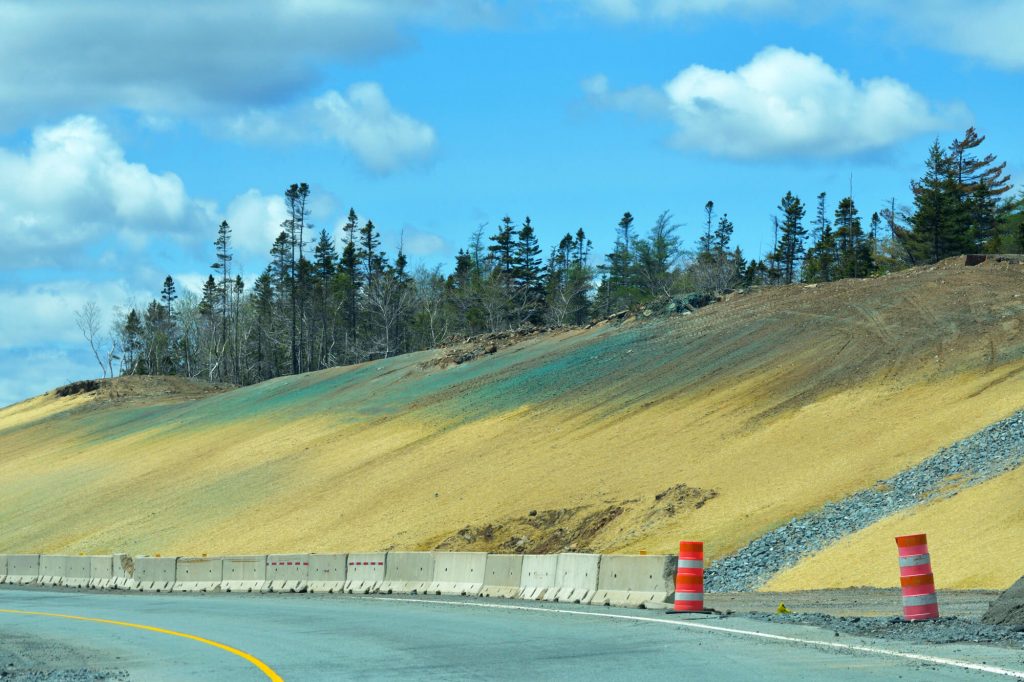Prevent Erosion and Sediment Control with Liquid Green Hydroseeding
Erosion and sediment control is essential to maintain the integrity of a landscape, especially during construction or landscaping projects. One of the most effective methods of erosion and sediment control is hydroseeding, which not only helps prevent soil erosion but also promotes healthy plant growth. In this article, we’ll explore how hydroseeding can help you prevent erosion and sediment control and create a healthy and beautiful landscape.
What is Hydroseeding?
Hydroseeding also know as “Spray on Grass” is a method of planting grass that involves spraying a mixture of seeds, water, fertilizer, and mulch over a prepared soil surface. This technique is highly efficient and cost-effective, covering large areas quickly and evenly. Hydroseeding is often used for erosion and sediment control, as it creates a nutrient-rich bed for the seeds to germinate and grow, stabilizes the soil, and reduces the likelihood of runoff.
Benefits of Hydroseeding for Erosion and Sediment Control
Prevents Soil Erosion: Hydroseeding helps stabilize the soil and create a protective layer of vegetation that can prevent soil from being washed away by rainwater or wind.
Reduces Runoff: Hydroseeding can reduce runoff by absorbing rainwater, which helps prevent soil erosion and sedimentation.
Promotes Plant Growth: Hydroseeding provides an optimal environment for seed germination, which promotes healthy plant growth and a beautiful landscape.
Cost-Effective: Hydroseeding is a cost-effective method of erosion and sediment control when compared to traditional methods like sod installation.
Quick and Easy Installation: Hydroseeding can be installed quickly and efficiently, covering large areas in a short amount of time.
Hydroseeding Techniques for Erosion and Sediment Control
Mulch Seeding: Mulch seeding is the most common technique for erosion and sediment control with hydroseeding. Mulch helps hold the soil in place, reduces water runoff, and provides nutrients for the seeds to germinate and grow.
Tackifier: A tackifier is a product that is added to the hydroseeding mixture to increase the adhesive properties of the mulch. This helps the mulch adhere to the soil surface and reduce the likelihood of runoff.
Fiber Mulch: Fiber mulch is made from recycled paper, wood, or straw and is often used for steep slopes and other areas with high erosion potential. Fiber mulch provides extra reinforcement to the soil and reduces the risk of erosion.
Compost: Compost can be added to the hydroseeding mixture to provide additional nutrients and promote healthy plant growth. Compost can also help reduce soil compaction, which can lead to erosion.
Hydroseeding is an effective and cost-efficient method of erosion and sediment control that promotes healthy plant growth and creates a beautiful landscape. With its ability to prevent soil erosion, reduce runoff, and provide optimal growing conditions for plants, hydroseeding is an ideal choice for any landscaping or construction project. By choosing the right hydroseeding techniques like mulch seeding, tackifier, fiber mulch, and compost, you can prevent erosion and sediment control and create a healthy and sustainable landscape.


Hydroseeding is an effective erosion control method that helps to prevent soil erosion by promoting the growth of grass and other vegetation on disturbed soil. When soil is exposed due to construction or other activities, it is vulnerable to erosion by wind, water, and other natural forces. Hydroseeding helps to stabilize the soil by adding a layer of protective mulch that helps to hold moisture and protect the seeds from erosion.
The mulch used in hydroseeding is typically a mixture of wood fibers, cellulose fibers, or other materials that have been specially designed for this purpose. The mulch acts as a protective layer that helps to retain moisture and provides a favorable environment for the seed to germinate and grow.
Hydroseeding also allows for an even distribution of seed and mulch, which helps to ensure that all areas are covered and have the same chance for growth. The seeds used in hydroseeding are chosen for their ability to grow quickly and establish a strong root system, which further helps to stabilize the soil and prevent erosion.
Overall, hydroseeding is an effective erosion control method that can help to stabilize soil, prevent erosion, and promote the growth of vegetation in areas that have been disturbed by construction or other activities.


